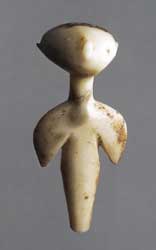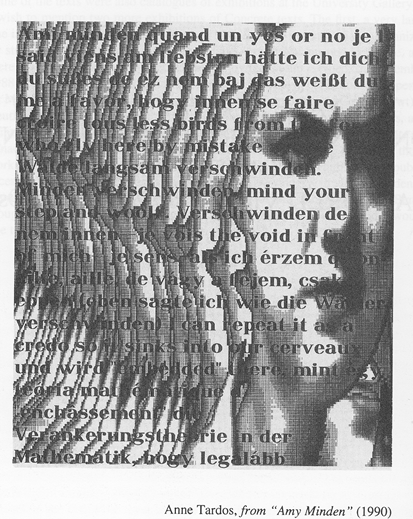Evaluation Criteria for All OptionsLength: roughly 7-15 pages. 15-pt. scale: A = 14-15 A = outstanding. Meets all of the stated criteria and instructions exceptionally well. Excels in inventiveness, originality, and energy, realitve to work produced generally in 323. Well-edited and proofed, and shows careful revision and improvement over the writing process. Probably publishable with a bit more work. F = unacceptable. Story either fails to meet any of the stated criteria, or demonstrates severe oversights or weaknesses in significant areas.
Keep It Simple...but if you feel confident, you may consider the following options: Option #1: You, Yourself, Thee, Thou, Ya'll
Write a story from the third person point of view, and in which you yourself appear as a character. OR: write a story in the first person, in which you appear as a character but are not the narrator. Part of your purpose here is to practice distinguishing between the narrator of a story and its author. Also: to begin seeing yourself as a character; indeed as multiple characters.
|
Option #4: Flash FictionThe short-short story, only 250-300 words. If you select this option, you'll need to complete at least 5 stories. Click here for info, guidelines, and stories in the microfiction or flash fiction mode. Purpose: to practice brevity; to experiment with form; to learn the full value and resonance of every word in a story. |
 |
Option #5: Formula Fiction
The following project is not intended to encourage writing by formula, but to maybe help you recognize stock literary patterns in the marketplace, as well as your own tendencies toward standardized writing. This type of fiction can also be fun, and a number of "serious" writers throughout the years (William Faulkner, Dorothy Sayers, Thomas McGrath) have played with it a bit.
- Using
"Reading Fiction"
as a guide for this project, write up a list of instructions (a "tip
sheet") for some kind of popular formula story that you've observed
in novels, TV shows, or movies. How is the plot always patterned in
this sort of story? Who are the usual, predictable characters?
What are the stock scenes and how is the style consistent? To get
started, you might consider a Harlequin Romance or science fiction novel,
the Die Hard film series, or perhaps a TV soap opera or situation
comedy. Be sure to list thorough instructions for all of the story's
major elements: plot, characterization, setting, themes, and style, and
try to make your tip sheet as detailed as the one handed out in class.
- Now try writing a story based on the formula you've analyzed, taking care to follow the instructions you outlined in your tip sheet. (Note: this exercise very easily turns into parody—which is fine, though you should first try it with complete seriousness.) Be sure to develop the scenes completely with adequate detail (do more than merely outline or sketch the story), keeping an eye on your own instructions and watching for further examples of this formula out beyond the classroom. Try to write something that a publisher would actually buy.
(As a follow-up idea to this project, you might rewrite the scenes you completed above, but this time with an eye to innovation: try to alter the standardized patterns enough to refresh the story and re-challenge, re-engage your reader. You might introduce some odd, unexpected character, or maybe you could execute a turn in the plot that would never normally happen in the particular formula story you are working with. Feel free, finally, to improvise as much as you wish, rewriting the story entirely if you so choose.)
Purpose: to help you recognize marketplace formulas and (hopefully) avoid or appropriate them for really creative purposes.
Option #6: Minimalism
Write a short story in a "minimalist" style, ala Raymond Carver, Richard Ford, Anne Beattie—or the father of them all, Ernest Hemingway. This style relies heavily on simple, declarative sentences, its protagonist is likely anti-heroic and possibly simple-minded, the writing is very concrete (little abstract reflection or exposition), and the overall approach is laconic, compressed, indirect, and understated. Use what Heminingway calls the "technique of omission," in which leaving many things UNSAID gives what IS SAID special force. Examine the Carver story we discussed in class for help, and perhaps read/reread some Hemingway as well.
Purpose: to practice brevity; to learn the full value and resonance of every word in fiction; to begin recognizing and working with irony (understatement).
Option #7: The Anti-Heroic Protagonist
Keeping in mind the protagonist of Ray Carver's "Cathedral," write a short story in which the central character is somehow less educated and world-wise than yourself, and perhaps to varying degrees corrupt in some way. This character should not be so flawed as to be completely unsympathetic or evil, but should be a less-than-admirable individual who is possibly not even aware of his or her failings: narrow-mindedness, dishonesty, egocentrism, gullibility—whatever. (The reader might be able to see these weaknesses, even though the character himself cannot.) What, do you suppose, are the benefits for the writer of creating such a character? What are the effects on the reader?
To develop this sort of ironic and anti-heroic protagonist believably, you might take a look at the character- development tips in your Harmonious Confusion packet.
Purpose: to understand literary art as an excursion into uncomfortable and unknown subject matter; to challenge your understanding of "character" and "hero"; to understand literary art as an ethical examination of the self.
 Option 8: Magical Realism
Option 8: Magical Realism
"I admit that two-and-two-makes-four is an excellent thing, but if all things are to be praised, I should say that two-and-two-makes-five is also a delightful thing." —Fyodor Dostoevsky
DO NOT ATTEMPT THIS WITHOUT READING ACTUAL SAMPLES AND EXPLORING THE GENRE. IT IS NOT THE SAME AS FANTASY OR SCIENCE FICTION.
In "magical realism," the setting for a story is realistic, but elements of the fantastic, irrational, or hyperbolic are suddenly or steadily introduced: a horse in an otherwise realistic setting begins to talk; an average, everyday South American village receives a visit from a man with wings; the corpse of a beautiful, eight-foot man washes up on a beach; a vegetable garden on the edge of a quiet town becomes fantastically wild, etc. You might find scenes that tease credulity, or that exaggerate selected images almost comically—without forgoing a realistic base altogether. I.e., stories in this genre are NOT set in an entirely imaginary landscape or world. The effect is a sort of warping or defamiliarizing of everyday reality, or a reality which mixes everyday rationality with dream logic.
Compose such a story.
Note: It's especially important that you investigate sample work in this mode, in order to do this option well. Magical realism is not the same as fantasy or science fiction. Check out this very good web site on magical realism, and look up some stories by Alberto Rios (his book Pig Cookies is wonderful), Angela Carter, Tadeusz Konwicki, Gabriel Garcia Marquez, Isabelle Allende, and others).
Movies to check out: Like Water for Chocolate, Big Fish, Being John Malkovich.
Click here for a good piece which defines Magical Realism.
Purpose: to learn about and practice a "fanciful" form which is unlike the formula sci-fi and fantasy you may be used to.
Option #9: Plot Devices
SOMETHING TO TRY ONLY IF YOU ALREADY HAVE EXPERIENCE WRITING CHRONOLOGICAL PLOTS.
Write a short story in which you practice at least three plot devices in a more-or-less chronological narrative: framing, flashbacks, false leads, deliberate showing and speeding of pace, etc.
Or try the following:
a) a story with a nonchronological plot (a montage, for instance, or a story made up entirely of flashbacks);
b) a story with multiple or intersecting plots (this might be too long and involved for the time you have, but you could at least get a start on it);
c) a story with no plot, or virtually no plot, at all. Note: for this option to be successful, there necessarily must be some extra reliance on something other than plot to give the story interest: character, setting, point of view, imagery, dialogue, etc.
Purpose: to learn about plot possibilities; to practice a variety of plotting skills; to learn about the ways in which perception is shaped by narrative strategy.

